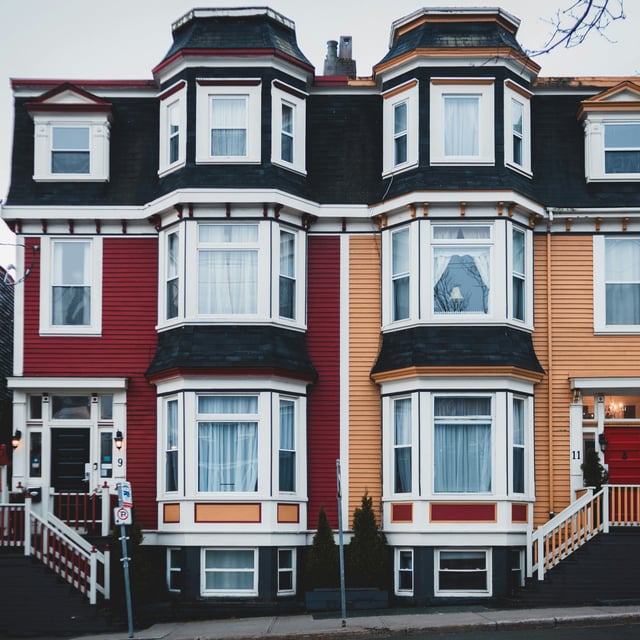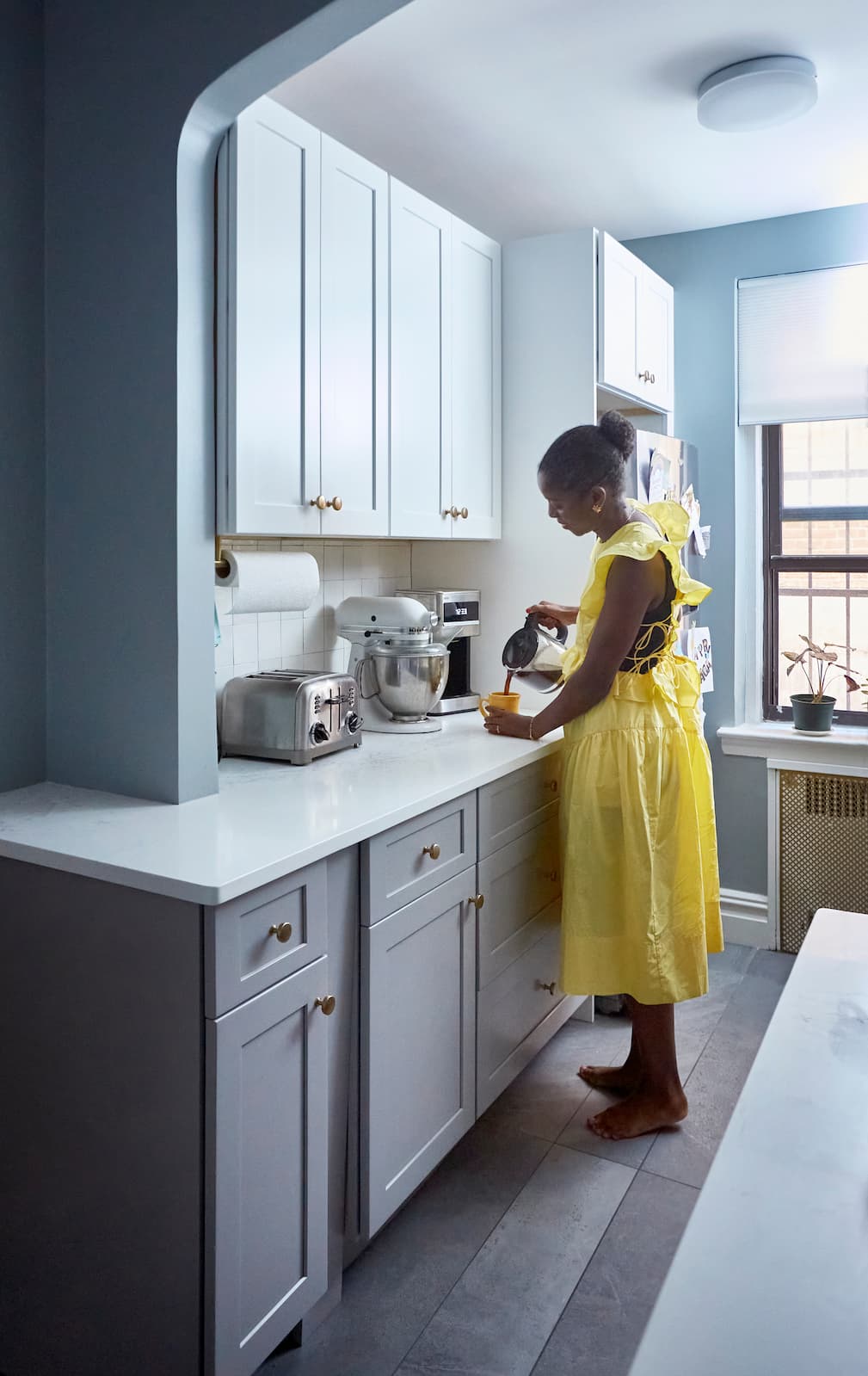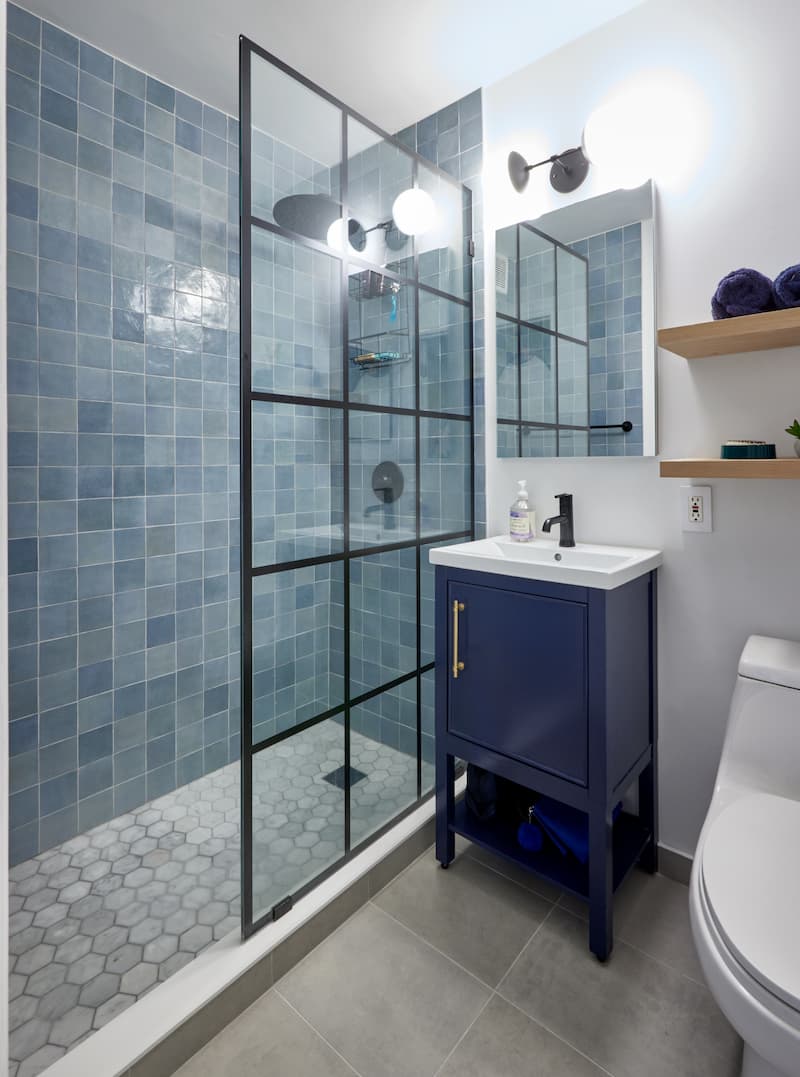How to Plan and Manage a Multifamily Renovation

In This Article
Perhaps you just bought a fixer‑upper duplex in Chicago, serve on the HOA board of a Bay Area condo building, or plan to convert a 4,000‑square‑foot Philadelphia property into multiple rentals. When you set out to improve performance, comfort, and long‑term value in a multifamily building, many fundamentals mirror a single‑family renovation. A sound roof protects your investment and prevents cascading repairs. A well-planned kitchen elevates daily life and broadens appeal for future buyers or tenants.
There are, however, distinct considerations when remodeling multifamily properties and their individual units. Shared systems, code requirements, egress, accessibility, and noise control often shape design choices and timelines. Staging work to minimize tenant disruption and coordinating with building management or HOAs can be just as important as the design itself. While an experienced contractor should tailor recommendations to your building, the following tips are useful to keep top of mind as you plan.
Renovation considerations for multifamily buildings
Soundproofing between units is essential
In multifamily renovations, sound control is one of the clearest ways to improve tenant satisfaction and reduce churn. Focus on assemblies, not just materials: resilient channels, double-stud or staggered-stud walls, mineral wool insulation, and sound-rated drywall can meaningfully reduce transmission. For floors, pair underlayment with the right surface material—luxury vinyl plank over an acoustic underlayment often outperforms thin laminate, and carpet tiles with cushion can help in hallways.
Don’t overlook flanking paths like recessed lights, plumbing chases, door undercuts, and shared HVAC returns. Seal penetrations with acoustic caulk, add door sweeps, and consider solid-core doors for units and stairwells. If you’re planning kitchen or bath back-to-back layouts across units, specify sound isolation around vent stacks and shared walls so you’re not amplifying water hammer or shower noise at 6 a.m.
For more tips on dampening sound transference in your multifamily building, read Apartment Soundproofing Home Renovations.
Multifamily renovations to enhance safety and harmony
- Security systems: Modern access control increases safety and convenience. Cloud-managed smart locks and fob systems help control entry without the headache of physical key management. Video intercoms let residents see visitors from their phones, and cameras in common areas deter unauthorized access when clearly disclosed and placed in compliance with local laws. Good lighting is a security upgrade, too: bright, even illumination at the entry, mail area, and parking keeps sightlines clear.
- Package drop-off: A secure package room with camera coverage and access logging can reduce lost items and lobby clutter. If space is tight, wall-mounted smart parcel lockers are efficient and code-friendly. Add shelving for oversized deliveries and clear wayfinding so carriers don’t wander halls hunting for unit doors. Good signage and a simple policy go a long way toward harmony.
- Fire and life safety upgrades: Upgrading to hardwired, interconnected smoke and CO detectors in units and halls increases protection and simplifies maintenance. In larger buildings, evaluate sprinklers, standpipes, rated corridor doors, and self-closers to improve fire separation. Photo-luminescent egress markings, lit exit signage, and updated stair railings support safer evacuations and code compliance.
Turn your renovation vision into reality
Get matched with trusted contractors and start your renovation today!
Find a Contractor
Front door and hallway renovations
Your multifamily building’s front door sets expectations. Solid-core or metal doors with high-quality closers, durable weatherstripping, and ADA-compliant hardware boost security and accessibility. Pair this with a clean, bright vestibule and clear address signage that helps deliveries and first responders.
Hallways carry heavy foot traffic, so durability matters. Choose impact-resistant wall finishes or chair rails, scuff-resistant paint in a light neutral, and low-glare LED lighting at consistent color temperatures for a calm feel. Replace tired flooring with commercial-grade carpet tile or luxury vinyl tile to limit trip hazards and simplify future repairs. Small touches—art rails, plants in well-lit zones, and neatly labeled unit numbers—make common spaces feel cared for.
Changing the unit configurations to meet neighborhood demand
In some neighborhoods, converting a large one-bedroom into a true two-bedroom can improve occupancy and overall rent; in others, generous studios with smart storage and in-unit laundry outperform. Take stock of who populates the neighborhood—students, young professionals, or families—and their needs.
Consider the building’s plumbing and vent stacks when moving kitchens or baths—shorter distances to existing risers generally mean lower costs and fewer surprises.
If you’re adding bedrooms, confirm egress, natural light requirements, and minimum room sizes in your jurisdiction. Window placement, closet depth, and door swings affect livability more than you might think. Thoughtful space planning—like pocket doors, built-in storage walls, and breakfast bars—can transform smaller footprints without expensive structural changes.
Efficiency-minded upgrades to reduce operating costs
Utility costs add up across many units. Target the systems that pay you back. High-efficiency boilers or heat pumps, smart thermostats in common areas, and weatherization—air sealing, attic insulation, and window repairs or upgrades—often deliver strong returns. In-unit, low-flow fixtures and Energy Star appliances lower consumption without sacrificing comfort.
In common areas, LED lighting with occupancy and daylight sensors trims electric bills. Consider sub-metering water or electricity where allowed to encourage responsible use. If your roof is due, evaluate a cool roof or solar readiness while scaffolding is up; stacking scopes is often the cheapest way to future-proof your building’s envelope and systems.
Building building amenities—laundry rooms, basement storage, and more
Shared amenities shape daily experience and can lift rents without major structural work. Consider renovating unused space into a laundry room, extra storage, bike rooms with repair stations, stroller parking near the lobby, or a small co-working alcove with outlets and reliable Wi‑Fi.
Think about wellness and community, too. A compact fitness room with rubber flooring and mirrors, a multipurpose lounge for meetings or movie nights, or a roof deck with code-compliant railings and planters can set your property apart. Pet-washing stations in the basement, tool-lending closets, and sound-treated music or hobby rooms are popular in certain markets. Focus on durable finishes, easy-clean surfaces, clear rules of use, and good ventilation so amenities stay pleasant over time.
Cosmetic exterior and green area upgrades
Exterior improvements to your multifamily building are a visible signal of care and can boost leasing. Repair and repoint masonry, patch stucco, or replace damaged siding to extend the building’s life and sharpen curb appeal. Refresh exterior paint with a cohesive palette, upgrade house numbers and wayfinding, and install energy-efficient exterior fixtures at a consistent color temperature for a polished look.
Landscaped areas benefit from thoughtful, maintainable upgrades. Replace failing edging, add compact seating walls, and introduce native plant beds with weed-suppressing mulch. Improve drainage with regraded swales or permeable pavers where water pools. Where appropriate, add secure fencing, a modest pergola or trellis, and irrigation zone updates with smart controllers and drip lines to reduce overspray and maintenance.
Know the Cost Before You Start

Renovation considerations for multifamily units
While our guide Fixing Up Rental Properties? 15 High-ROI Renovations to Increase Value goes into greater detail about what tenants value, below is an overview:
- Upgrade the lighting throughout the rental property: Good lighting sells space and safety. Layer ambient, task, and accent lighting with efficient LEDs to make rooms feel larger and more welcoming.
- Invest in quality countertops: Durable surfaces like quartz hold up to turnover and daily use. You save on maintenance while elevating perceived value year after year.
- Cheap appliances will hurt perceived rental value: Mid-grade, energy-efficient models balance reliability and tenant appeal. Consistent brands across units simplify service and parts.
- Reface cabinets and update the hardware: Refacing or painting with new pulls can transform kitchens for a fraction of full replacement. It’s a quick way to modernize between tenants.
- Add in-unit laundry: If your system supports it, this is a top convenience upgrade. Compact, ventless options can work where venting is a challenge. Read this guide on how to build a designated laundry space.
- Make your tub shine: Reglazing or replacing a tired tub and regrouting tile signals cleanliness. Bright, clean bathrooms reduce turnover hesitation.
- Build an extra half-bath: A small powder room can dramatically change livability. If the majority of the plumbing needs are already met, the value bump often justifies the remodeling cost. Make sure to keep minimum bathroom dimensions in mind when designing!
- Small flaws can be big red flags: Loose outlets, squeaky doors, and chipped trim erode trust. A punch-list mindset shows the unit is cared for and move-in ready.
- Consider upgrading the unit’s front door: A solid-core door with modern hardware improves security and quiet. It’s an everyday quality-of-life upgrade residents notice.
- Opt for white paint: Light, warm whites brighten rooms and photograph well. Touch-ups are easy, keeping units fresh between tenants.
- Ditch carpet: Durable hard surfaces resist stains and wear. Add area rugs for warmth without the long-term maintenance issues.
- Make sure the property is mold-free: Address moisture sources and remediate properly. Healthy air and clean surfaces protect residents and your investment.
Renovate with confidence every step of the way
Step 1: Personalize Your Renovation Plan
Step 2: Receive Quotes from Trusted Contractors
Step 3: Let Us Handle the Project Details

Tips for making your multifamily renovation run smoothly
- Plan phases around occupancy and quiet hours: Stagger work to minimize disruption, use clear notices, and cluster loud tasks to fewer days.
- Choose contractors with people skills in addition to technical skills: Chances are, your contractors will interact with tenants during the project—sometimes daily. The right team treats the property and residents with respect, mindful of how they conduct themselves.
- Stack scopes while access is open: Combine plumbing, electrical, and insulation work once walls are open to avoid repeat disruptions and costs.
- Order long-lead items early: Doors, windows, electrical gear, and appliances can delay timelines—lock specs and place orders up front.
- Standardize finishes where smart: Consistent flooring, paint, and fixtures simplify maintenance and bulk purchasing without feeling cookie-cutter.
- Communicate early and often: Post schedules in common areas, send updates, and provide a contact for questions to keep trust high.
- Verify code and permitting requirements: Multifamily buildings have more life-safety rules than single family homes, so work with your contractor to ensure all plans align to local demands.
- Protect common areas during construction: Floor protection, dust control, and daily cleanup preserve goodwill and avoid extra costs.
- Document conditions and changes: Photos, daily logs, and clear change order approvals reduce disputes and keep budgets on track.
Design a Home That’s Uniquely Yours
Block can help you achieve your renovation goals and bring your dream remodel to life with price assurance and expert support.
Get Started
Find the right contractors with help from Block
Multifamily renovations call for reliable, local expertise. That’s why Block is highly selective with who we invite to join our network—extending from New York to Chicago to the Bay Area, and many cities in between. Every builder is vetted for licensing, insurance, craftsmanship, and references. Moreover, we work hard to select the local contractors whose experiences best align with your specific project needs. Once proposals are submitted, our Renovation Consultants will work with you to review each one to catch missing line items or oddities.
Ready to move forward? Tell us about your multifamily building, and we’ll connect you with the right local pros.

Written by Block Renovation

Renovate confidently with Block
Easily compare quotes from top quality contractors, and get peace of mind with warranty & price protections.
Thousands of homeowners have renovated with Block

4.5 Stars (100+)

4.7 Stars (100+)

4.5 Stars (75+)
Renovate confidently
- Top quality contractors
- Warranty & price protections
- Expert resources

